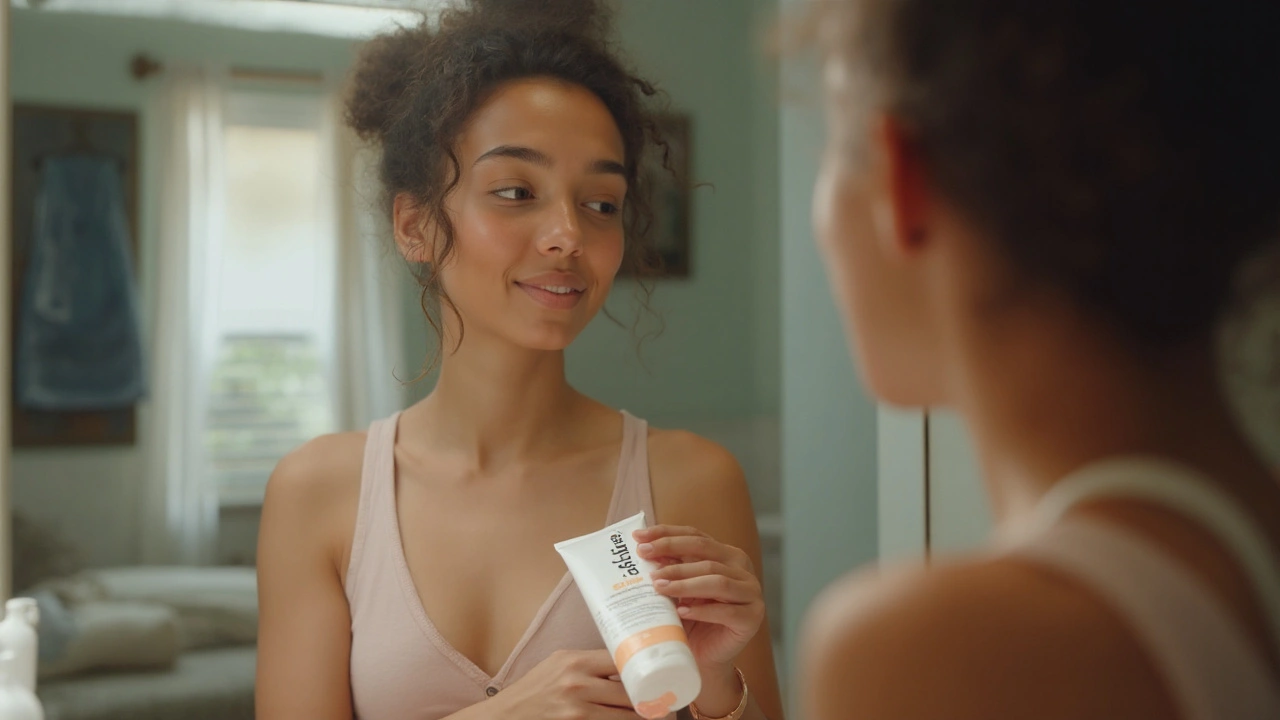Retinoid Gel: What It Is and Why You Might Need It
Retinoid gel is a topical form of vitamin A that speeds up skin cell turnover. The faster turnover helps clear clogged pores, smooth fine lines, and fade dark spots. Because it’s a gel, it feels lighter than a cream and works well for oily or combination skin. If you’re fighting stubborn acne or want a brighter complexion, a retinoid gel could be the missing piece in your routine.
How to Apply Retinoid Gel Correctly
Start slow. Use a pea‑size amount on clean, dry skin once a night, preferably after your moisturizer if you’re new to retinoids. Wait 20‑30 minutes after washing your face so the skin is completely dry—water can increase irritation. Follow with a gentle moisturizer to lock in hydration. In the morning, always apply a broad‑spectrum SPF 30+; retinoids make your skin more sensitive to UV light.
If you notice redness or peeling, cut back to every other night or switch to a lower concentration. Most people find that their skin adjusts within two to four weeks. Consistency beats intensity, so stick with a routine you can keep.
Choosing the Right Retinoid Gel for Your Skin
Look at the concentration. Over‑the‑counter gels usually range from 0.025% to 0.05% retinol; prescription options can go up to 0.1% or higher. If you have oily skin, a gel base helps keep shine at bay, while dry skin types may prefer a cream or serum. Popular OTC brands include Differin (adapalene 0.1%) and The Ordinary Retinoid Gel 0.05%.
Read the ingredient list for soothing additives like niacinamide, hyaluronic acid, or ceramides—these can reduce the burning feeling that many beginners experience. Avoid gels with added fragrance or alcohol if your skin is sensitive.
Pregnant or breastfeeding people should steer clear of retinoids, as high‑dose vitamin A can affect fetal development. If you have rosacea, eczema, or a history of severe irritation, talk to a dermatologist before starting.
When you first try a gel, keep a simple skincare routine: cleanser, retinoid gel, moisturizer, and sunscreen. Adding exfoliating acids or other strong actives can overload your skin and cause unnecessary irritation.
Typical side effects include dryness, mild itching, and a peeling phase that looks like a mild sunburn. These signs mean the product is working, but if you get intense burning, swelling, or blistering, stop use and seek professional advice.
Long‑term use can improve acne scars, reduce fine lines, and even even out skin tone. Most users notice smoother skin after about eight weeks of consistent application. Patience is key—retinoids reshape skin from the inside out, not overnight.
In summary, retinoid gel is a versatile tool for clearer, younger‑looking skin. Pick a concentration that matches your tolerance, apply it correctly, protect with sunscreen, and give your skin time to adapt. With the right approach, you’ll see fewer breakouts and a brighter complexion without the guesswork.
-
Differin Gel: Real Results, Science, and Everyday Tips for Acne Relief
Get the real facts about Differin Gel, how it tackles acne, and ways to make it work best for your skin. Tips for beginners and sensitive skin included.
